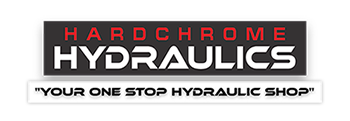Hydraulic hose failures can bring operations to a standstill, leading to costly downtime and potential safety hazards. Whether you’re managing heavy machinery in construction, agriculture, or industrial settings, understanding how to efficiently repair hydraulic hoses is crucial. This comprehensive guide delves into the essentials of hydraulic hose repair, the latest industry trends, and best practices to ensure your systems remain operational and safe.
Understanding Hydraulic Hose Repair
Hydraulic hoses are integral components in machinery, transmitting fluid power to various parts of the system. Over time, these hoses can suffer wear and tear due to factors like pressure surges, abrasion, or environmental conditions. Prompt repair or replacement is vital to maintain system integrity and prevent failures.
Step-by-Step Guide to Hydraulic Hose Repair
Addressing a damaged hydraulic hose involves several critical steps:
- Identify the Damaged Hose: Examine the system to locate the compromised hose. Look for signs like fluid leaks, cracks, or bulges.
- Depressurize the System: Before any repair, ensure the hydraulic system is turned off and depressurized to prevent accidents.
- Remove the Damaged Section: Use appropriate tools to cut out the faulty hose segment. Clean the surrounding area to prevent contamination.
- Prepare the Replacement Hose: Measure and cut a new hose segment matching the original specifications. Ensure compatibility with the system’s pressure and temperature requirements.
- Attach Fittings: Install the correct fittings on the new hose. Depending on the system, this may involve crimping or using reusable fittings.
- Install the New Hose: Connect the new hose segment to the system, ensuring all connections are secure and leak-free.
- Test the System: Gradually re-pressurize the system and monitor for leaks or irregularities.
Essential Tools for Hydraulic Hose Repair
Having the right tools can streamline the repair process:
- Hydraulic Hose Crimper: Essential for attaching fittings securely. Portable options like the allow for on-site repairs.
- Hose Cutters: Ensure clean cuts to prevent frayed ends and ensure proper fitting attachment.
- Wrenches and Spanners: Necessary for loosening and tightening fittings without damaging components.
- Cleaning Supplies: Keep the work area and hose ends clean to prevent contamination.
Emerging Trends in Hydraulic Hose Technology
The hydraulic hose industry is evolving, with innovations aimed at enhancing durability and system monitoring:
- Sensor-Integrated Hoses: Modern hoses now feature sensors that monitor pressure, temperature, and structural integrity, facilitating predictive maintenance and reducing failure risks.
- Advanced Materials: The incorporation of materials like graphene enhances hose strength and flexibility, while bio-based polymers offer sustainable alternatives with excellent resistance properties.
- Automated Crimping Machinery: Advancements in crimping technology, including intelligent automation, are improving efficiency and reliability in hose assembly processes.
Market Outlook for Hydraulic Hoses and Fittings
The global hydraulic hose and fittings market is projected to grow significantly, driven by increased demand in sectors like oil & gas, construction, and agriculture. Technavio forecasts a compound annual growth rate (CAGR) of 4.7% from 2024 to 2029, with an estimated market increase of USD 581.3 million during this period.
Best Practices for Hydraulic Hose Maintenance
To extend the lifespan of hydraulic hoses and ensure system reliability:
- Regular Inspections: Periodically check hoses for signs of wear, leaks, or damage.
- Proper Routing: Ensure hoses are routed to minimize stress, avoiding sharp bends or contact with abrasive surfaces.
- Cleanliness: Maintain cleanliness during installation and repairs to prevent contamination.
- Training: Ensure personnel are trained in proper hose handling and maintenance procedures.
Conclusion
Efficient hydraulic hose repair is vital for maintaining operational continuity and safety in various industries. By understanding repair procedures, staying informed about technological advancements, and adhering to best maintenance practices, organizations can minimize downtime and extend the service life of their hydraulic systems.
Why Local Businesses Trust Us for Hydraulic Repairs
At Hardchrome Hydraulics, we understand that downtime costs money. That’s why we offer quick, reliable hydraulic repair services and heavy equipment maintenance to get you back to work fast. With our expert mobile mechanics and fully-equipped repair shop, we handle everything from minor fixes to major overhauls.
Serving Fort McMurray & Surrounding Areas
Looking for hydraulic repair near me or heavy equipment repair in Fort McMurray? Our team is ready to assist with fast, expert service.
Contact Us for Expert Hydraulic Repair
📍 Location: Fort McMurray, AB
📞 Call Us Now: (780) 838-8460
📩 Email: fmservice@hardchromehydraulics.com
💻 Website: www.hardchromehydraulics.comGet back to work faster with Hardchrome Hydraulics – Fort McMurray’s trusted hydraulic repair experts!

